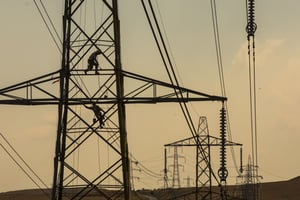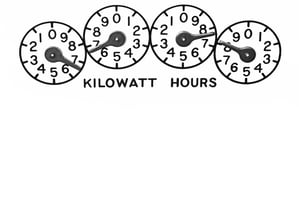2035 and the Constraint Problem
The Home Energy Efficiency Conundrum
The Climate Change Committee issued a letter to the Chancellor on 9th November which seems to have gone under the radar (https://www.theccc.org.uk/publication/letter-reducing-energy-demand-in-buildings-in-response-to-the-energy-price-crisis/). Although the letter is purportedly about ‘reducing energy demand in buildings in response to the energy price crisis’ it also seems to remind him not to forget net zero in the cost of living crisis and prior to the Autumn statement which was delivered last Thursday.
The letter is only 5 pages long; however it also has 19 pages of annexes where a lot of the interesting stuff is hidden away! The letter proposes various suggestions for priorities in reducing home energy bills including pushing once more incentives for cavity wall insulation and draught proofing, but of course most of these easy and cheap measures have already been done by the majority of households.
Solid wall insulation also features, but even the CCC admit that ‘payback periods are lengthy even under sustained high gas prices’ We suggest that this is somewhat of an understatement as Figure A.4 buried in the appendix has paybacks approaching 100 years even with current elevated energy prices. Even this may be an under estimate as the Element Energy report supporting the CCC 6th carbon budget (https://www.theccc.org.uk/publication/development-of-trajectories-for-residential-heat-decarbonisation-to-inform-the-sixth-carbon-budget-element-energy/) points out that the pre 1945 homes (about 43% of all homes in GB) which most need it due to many of them not having cavity walls, are also likely to have higher installation costs than the CCC assume. If you live for example (as I do) in a Victorian house, Element (quoting an assessment by Bath and North East Somerset council) estimate that solid wall insulation costs are about 3 times higher than the CCC assume, giving paybacks approaching 300 years!
Added to this is the difficulty that not only is there likely to be planning consent problems for older houses due to their heritage status, but internal insulation will have a significant impact on room sizes, and will of course require radiator moving, skirting board adjustment, carpet fitting and redecoration. In a world where everyone is struggling to pay energy bills, let alone find large sums of money for the more difficult insulation options, it is very hard to see any progress for older houses.
The CCC close the letter with a section on ‘making it happen’, which seems to summarise why it probably won’t happen! They stress the gaps in public information, the lack of stability in government policy, the shortages of skills available, the lack of standards for new low emission homes and the well-known problems with EPCs.
How did the chancellor respond? There is to be ‘a national ambition to reduce energy consumption by 15% by 2030, delivered through public and private investment, and a range of cost-free and low-cost steps to reduce energy demand.’ How is this to be delivered? Well, yet another new government policy and organisation, the Energy Efficiency Taskforce (EETF). To quote from the statement: ‘The government is announcing a new long-term commitment to drive improvements in energy efficiency to bring down bills for households, businesses and the public sector with an ambition to reduce the UK’s final energy consumption from buildings and industry by 15% by 2030 against 2021 levels. New government funding worth £6 billion will be made available from 2025 to 2028, in addition to the £6.6 billion provided in this Parliament. To achieve this target, a new EETF will be charged with delivering energy efficiency across the economy.’
Having failed with the ‘Green Deal’, and then failed again with the ‘Green Homes Grant’ schemes, it is difficult to see how yet another initiative is going to make much progress.



